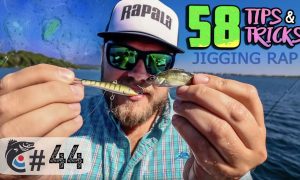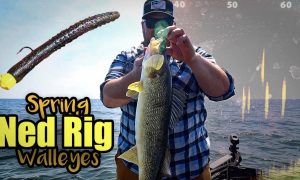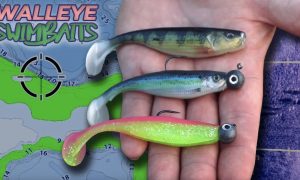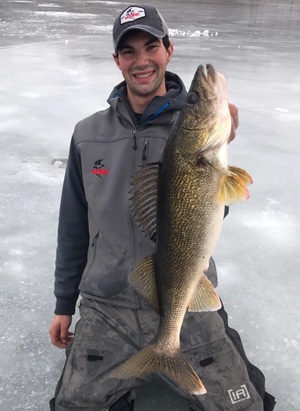 When targeting heavily-pressured ‘eyes in the big city, you gotta think differently. Many of these fish have seen it all, and can’t be fooled by the “typical” approach…
When targeting heavily-pressured ‘eyes in the big city, you gotta think differently. Many of these fish have seen it all, and can’t be fooled by the “typical” approach…
We tracked down Twin Cities (MN) native Andrew Osowski and had our minds blown by his approach to big metro gravel lizards…little outside the box, but clearly workin’ for him!
> Andrew: Seems like a lot of guys will go deep midwinter…there’s definitely fish to be caught out there, but most of my bigger ‘eyes come shallow.
> Fishing pressure will send fish shallow, but on metro lakes it’s also truck and snowmobile traffic that push ’em into weeds.
Structure:
> I’m looking for shallow weed flats (3-7′) with a clean coontail/milfoil mix that are adjacent to deeper water.
> Within the weeds I’m trying to scope out hard spots that have a sandy bottom…seems like walleyes will use these as travel lanes between the thicker weed clumps.
> I find these hard spots by either visually looking down the hole or using my flasher to find the clean areas…this is where I want my tip-ups to be.
> Finding small bluegills and crappies is the most important part of this deal [more on that later] because that’s what these shallow ‘eyes are gorging on.
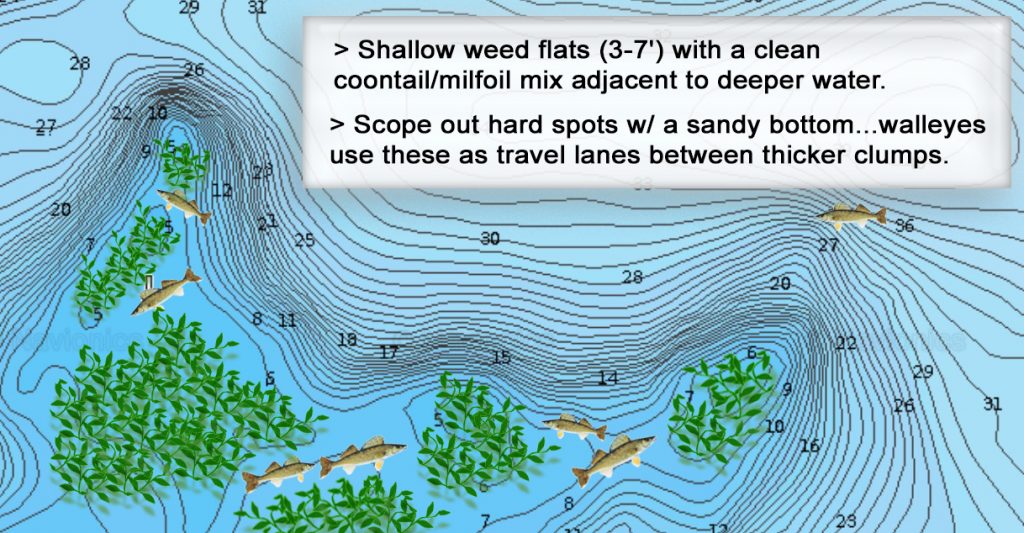
Jigging:
> I approach this kind of fishing like I’m targeting bluegills and crappies…a 4-mm tungsten jig and Panfish Plastics Chigger Fry (white).
> Crazy as it sounds, I actually try to catch the little panfish and get a school fired up below me. All that activity attracts roaming walleyes — essentially I’m fishing for bait to get the ‘eyes to roll by.
> When a walleye does come in, the pannie school will disappear [off the flasher] and be replaced by a big solid mark…stay aggressive with the tungsten, usually they’ll be fired up and crush it.
> If I miss a fish and it disappears, I’ll drop back down and pound bottom, bringing ’em back into the strike-zone.
Set-lines:
> For my tip-ups, I like the Trophy Thermal…keeps holes open in cold temps and has a smooth spool.
> Biggest thing is running a small hook so the minnow can swim as naturally as possible…I run a #1 Gamakatsu Octopus Hook with a couple split-shots to keep the minnow down.
> Tried playing around with smaller spoons but it seems like they limit the minnow action and don’t get bit as much.
> I like using small sucker minnows (2.5-3″) ‘cuz they’re super active in the water and pressured fish will actually eat ’em…not just mouth ’em like they do with larger minnows.
> Just barely skin hook the minnows with hook point facing the head — most fish will eat it head first, so this increases hook-ups for sure.
> Run a long leader (10+ ft) of 12-lb fluoro to the tip-up line…don’t want any of the tip-up line in the water column.
> I experimented with lighter leader line, but kept breaking off…the fish run hard side to side in shallow water and rub the line against the hole.
> Really have to let them eat it — lot of times when the flag pops they’ll just sit at the bottom of the hole and chew — I wait until they start taking line before setting the hook.
Other important tidbits:
> Being quiet is huge. Fish are extremely spooky in this shallow of water, even with a foot of ice above ’em.
> I always run low power mode on my flasher and I do think it makes a difference.
> As crazy as it sounds, I’ll even shut off the aerator in my minnow bucket to minimize noise/vibration once I get everything set up.
> I’ll park my rig at least 50 yards away from where I’m going to fish and walk the rest of the way…also never run to tip-ups…speed walk softly (lol).
> Best time is usually the hour before and after sunset, but I’ve caught ’em in the middle of the day when we’ve had stable weather.

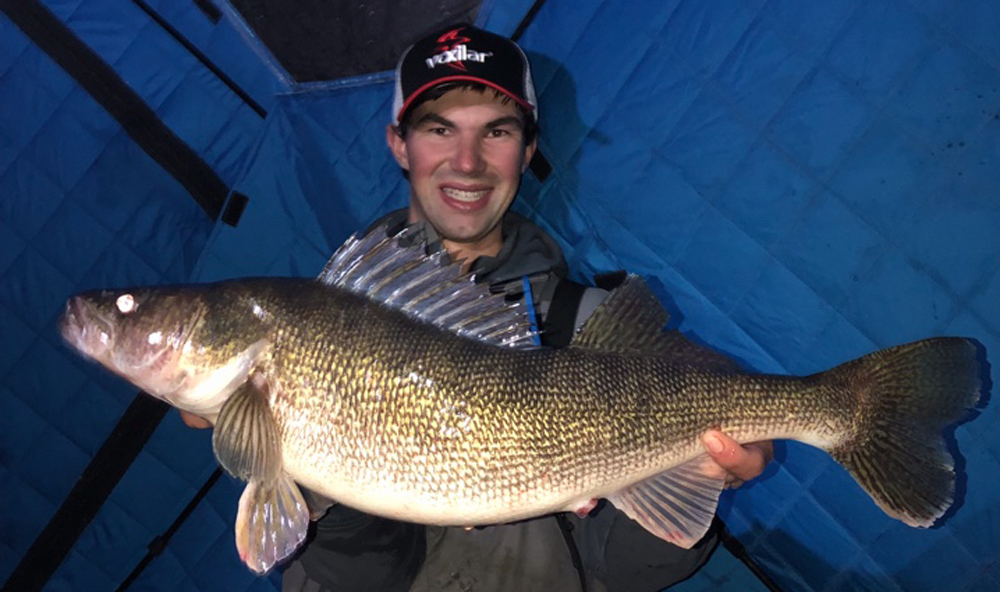


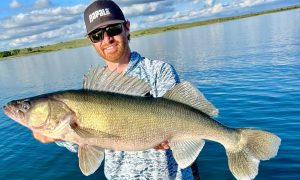

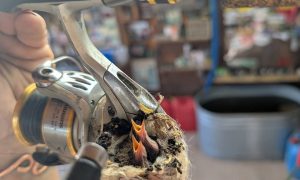

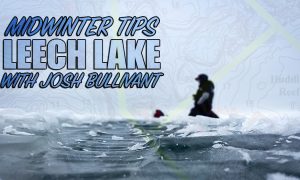

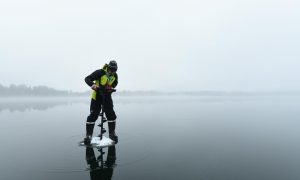



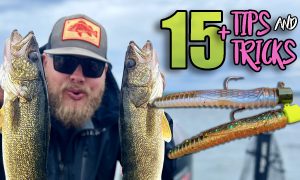

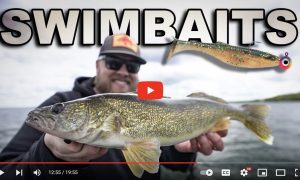

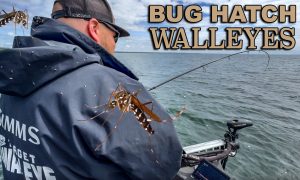

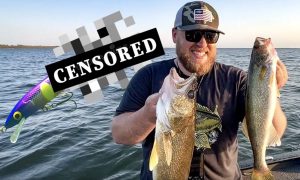

 …and...
…and...